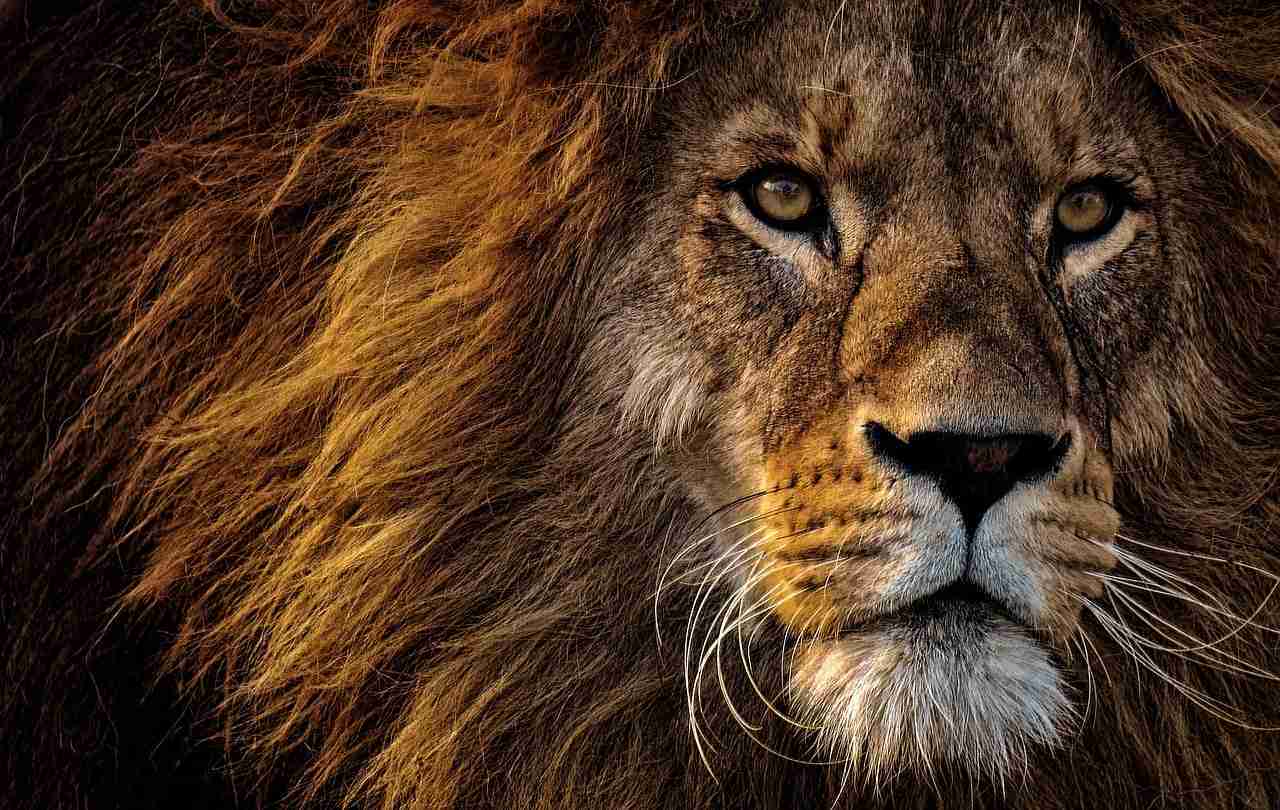23 Fun Facts About Lions That Will Blow Your Mind
1. Lions are the second-largest big cat species.
Lions are magnificent creatures that dominate the African savannas with their regal presence and commanding roars.
Despite being slightly smaller than tigers, lions make up for it with their unparalleled strength and social dynamics, living in close-knit pride that fosters cooperation and unity.
2. Lions are native to Africa.
Africa is the natural habitat for these majestic creatures, where they have adapted perfectly to thrive in diverse environments, including savannas, grasslands, and open woodlands. Their impressive range and adaptability make them apex predators in these regions, embodying the spirit of the African wilderness.
In these vast landscapes, lions demonstrate their exceptional hunting skills and social behaviors, living in tightly bonded pride that ensures their survival and dominance in the wild.
3. Lions are highly social animals and live in groups called pride.
Lions’ social nature shines brightly as they form tightly knit groups comprising 10 to 20 individuals. Within these close-knit family units, a complex hierarchy emerges, with females usually taking the lead in hunting and protecting their territory.
The pride structure fosters strong bonds among members, enabling them to work together efficiently and ensuring the group’s survival in the challenging African landscape. This social cohesion allows lions to exhibit collaborative behaviors, making them formidable hunters and guardians of their pride.
4. Female lions are the primary hunters.
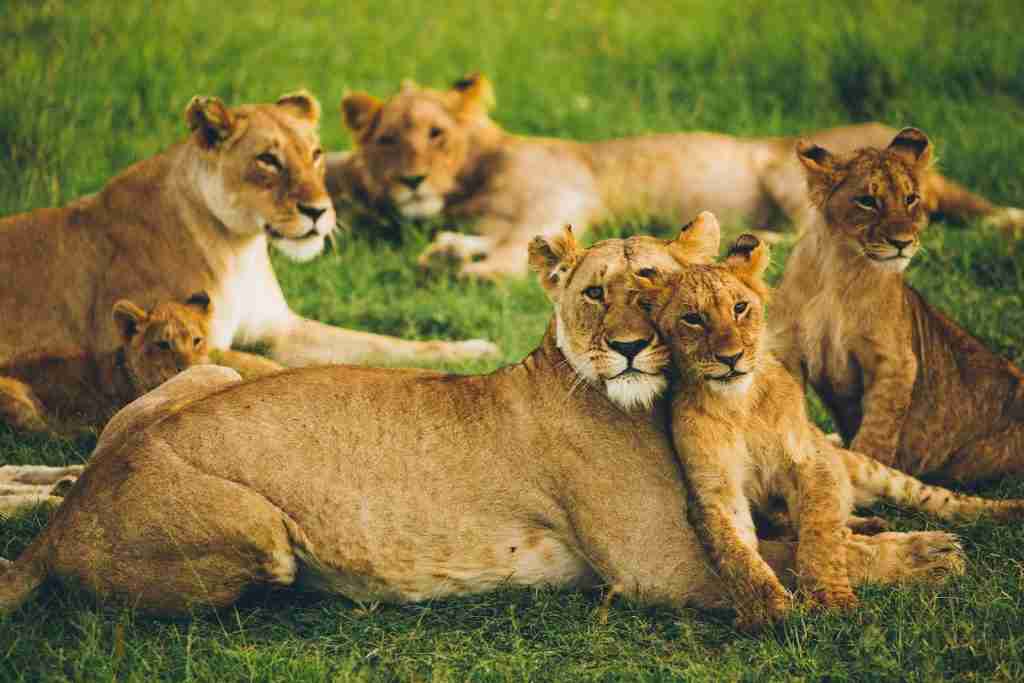
Through strategic planning and synchronized movements, lionesses utilize their intelligence and collective strength to bring down large animals such as wildebeest, zebra, and buffalo.
This division of labor allows the females to secure sustenance for the entire pride, showcasing their essential contribution to the survival and well-being of the group.
As adept and skilled hunters, lionesses exemplify the power of female collaboration in the African savannas.
5. Male lions defend the pride’s territory.
Male lions showcase their strength and courage, guarding the pride and its members from potential threats. Their powerful roars reverberate through the savannas, asserting their dominance and warding off intruders.
While the females handle the hunting, male lions’ territorial prowess ensures the pride’s safety and secures a thriving environment for the cubs and the entire family unit.
6. A lion’s roar can be heard from a distance of up to 5 miles.
The resounding roar of a lion reaches astonishing distances, carrying its powerful sound 8 kilometers away. This remarkable vocalization serves multiple purposes, from communicating with pride members to asserting dominance over rival males and marking their territory.
Lions’ unique ability to produce such far-reaching roars is a testament to their commanding presence and their role as the true kings of the African savannas.
7. One of the fun facts about Lions is that the scientific name for the lion is Panthera Leo.
As a member of the Panthera genus, lions are distinguished by their regal appearance and powerful presence.
This classification highlights their close relation to other big cat species, such as tigers, leopards, and jaguars, solidifying their status as one of the most awe-inspiring creatures in the animal kingdom.
The name Panthera Leo encapsulates the essence of these majestic predators, symbolizing their prominent position within the feline family.
8. Lions are primarily nocturnal.
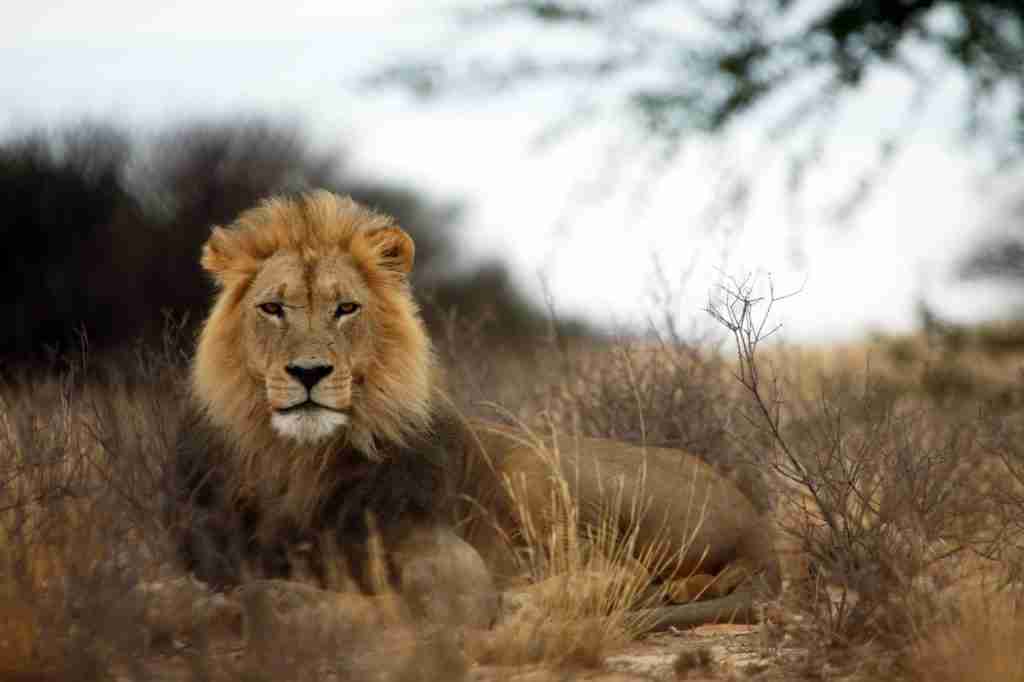
As the sun sets over the African savannas, these magnificent predators come alive, relying on their exceptional night vision to stalk and hunt their prey under cover of darkness.
Their nocturnal habits also help them avoid the day’s scorching heat, allowing them to conserve energy and stay cool in their arid habitats.
During the night, the echoing roars of lions resonate across the plains, marking their presence as the rulers of the night in the African wilderness.
9. A wild lion can live up to 14 years.
In the wild, lions lead a life filled with challenges and dangers, resulting in an average lifespan of around 10 to 14 years. Factors such as predation, territorial disputes, and limited access to resources contribute to the relatively shorter lifespan in their natural habitat.
Conversely, lions under human care in captivity experience improved living conditions, regular medical attention, and protected environments, allowing them to live longer lives of up to 20 years.
With proper care and attention, these captive lions can thrive and enjoy a prolonged existence, providing valuable opportunities for research, education, and conservation efforts.
10. Lions can run up to 50 miles per hour.
Lions’ agile and powerful strides make them swift hunters, enabling them to chase down and capture their prey with extraordinary precision.
This exceptional running ability, combined with their keen senses and cooperative hunting strategies, grants lions a significant advantage in the race for survival in the African savannas.
When these magnificent creatures unleash their speed, they exemplify the epitome of nature’s grace and ferocity in motion.
11. Lions can take down large prey like wildebeest, zebra, and buffalo.
Lions’ collaborative hunting tactics involve strategic planning and synchronized attacks, overwhelming their target with sheer force and cunning.
With each lion contributing its strength and skill, they demonstrate the power of teamwork in securing sustenance for the pride.
These successful hunts sustain the pride’s survival and exemplify the extraordinary hunting prowess that makes lions apex predators in their natural habitat.
12. Lions are opportunistic eaters and will scavenge if the opportunity arises.
In times of scarcity or when hunting is less successful, lions are open to feeding on the remains of carcasses left behind by other predators. This survival strategy showcases their resourcefulness and ability to sustain themselves even in challenging conditions.
As skilled hunters and opportunistic feeders, lions are versatile in obtaining nourishment in the vast and ever-changing African landscape.
13. Lion cubs are born blind.
Lion cubs enter the world as vulnerable bundles of fur, born blind and dependent on their mother for care and protection. Their initial weeks of life are critical, as they rely entirely on their mother’s nurturing instincts for survival.
During this period, lioness mothers are highly attentive, ensuring the cubs stay safe and well-fed.
As the weeks pass and their eyesight develops, these tiny and adorable cubs grow stronger, eventually embarking on a journey of growth and learning in the vast and unpredictable wilderness of the African savannas.
14. The gestation period for lionesses is approximately 110 days.
When the time comes, lionesses give birth to litters that usually consist of two to four cubs. This period marks the beginning of a critical chapter in the lioness’s life as she assumes the responsibility of raising and nurturing her offspring, preparing them for the challenges they will face as future members of the pride.
These cubs’ successful birth and survival are essential for sustaining pride and ensuring the continuation of the lion species in the vast African wilderness.
15. Lions have retractable claws, which is one of the fun facts about Lions.
Lions can retract their razor-sharp claws, which sets them apart from many other big cat species. This adaptation enables them to keep their formidable weapons hidden when not actively engaged in hunting or defending themselves.
By retracting their claws, lions can preserve their sharpness and maintain their effectiveness when the need arises, ensuring they are always well-equipped to tackle any challenges that come their way.
This incredible feature showcases nature’s intricate design, equipping lions with the tools they need to thrive as the apex predators of the African savannas.
16. Lions are known for their elaborate courtship rituals.
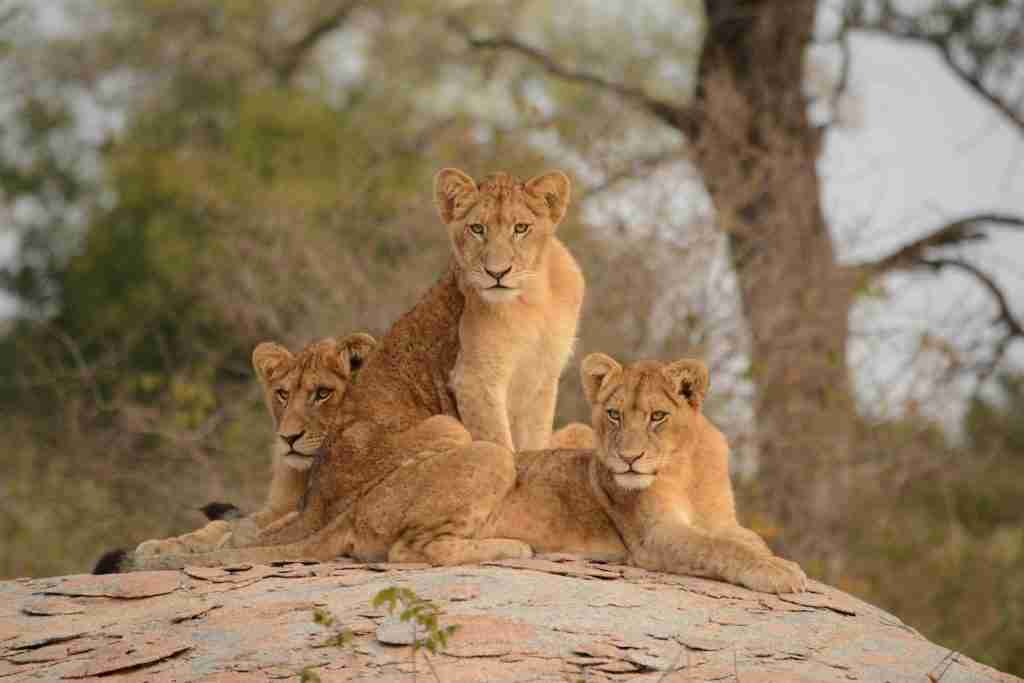
Within the intricate social structure of a lion pride, courtship rituals and displays of affection play a crucial role in fostering strong bonds between members. As potential mates come together, they engage in elaborate behaviors, including gentle nuzzling, grooming, and affectionate interactions.
These intimate moments reinforce the unity and trust within the pride, solidifying the foundation for successful cooperation and collective hunting efforts.
17. Male lions may form alliances to take over pride.
By joining forces, these coalition males bolster their strength and dominance by joining forces, making them a formidable force against rival males.
The alliances also offer protection and support, enabling them to successfully defend their territory and ensure the safety of the pride.
Through this strategic collaboration, male lions exemplify their intelligence and adaptability, demonstrating how cooperation can lead to securing their place as leaders in the competitive world of the African savannas.
18. Adult male lions can weigh between 330 to 550 pounds.
On the other hand, lionesses, slightly smaller than their male counterparts, exhibit weights between 260 to 400 pounds (120 to 180 kilograms). Their more nimble frames are well-suited for their roles as skilled hunters and nurturing caregivers within the pride’s social structure.
The contrasting sizes between male and female lions highlight the unique attributes and contributions of each gender to the balance and survival of pride.
19. White lions are a rare genetic variation of lions.
White lions are a captivating rarity, showcasing distinct pale fur and striking blue eyes. This unique and mesmerizing appearance results from a recessive gene, leading to their stunning coloration.
While their physical attributes may differ from their tawny counterparts, white lions maintain the same majestic and regal characteristics, making them iconic symbols of strength and grace.
As a result of their rarity and allure, white lions have become a subject of fascination and admiration for enthusiasts and wildlife lovers worldwide.
20. Lion symbolizes courage and strength in various cultures and civilizations.
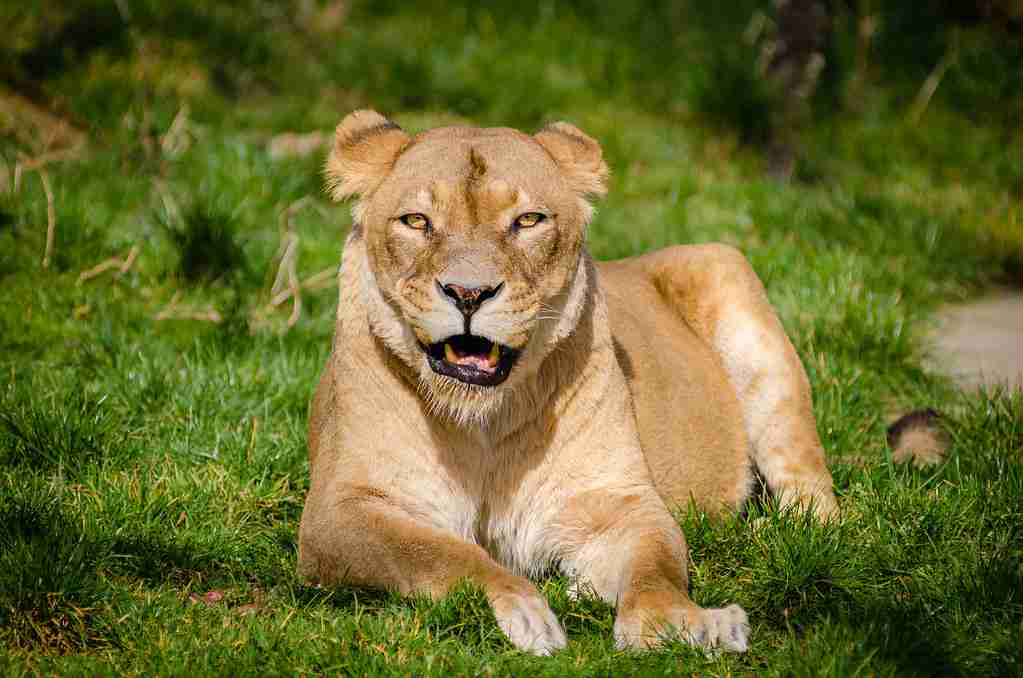
Their powerful presence in mythology, art, and folklore signifies their association with leadership, valor, and majesty.
From ancient Egyptian depictions of lion-headed deities to medieval knights using the lion as a symbol of bravery, these regal creatures have left an indelible mark on human consciousness.
To this day, lions continue to be revered as iconic emblems of courage, reminding us of the enduring allure and fascination with these magnificent beasts.
21. In ancient Egypt, lions were associated with the sun god Ra.
Often portrayed as lion-headed deities, these representations symbolized the strength, majesty, and protective qualities of both lions and the sun god.
Egyptian temples and monuments featured intricate carvings and sculptures of lions, emphasizing their significance in religious beliefs and cultural practices.
As guardians of Ra’s divine radiance, lions held a revered place in the hearts and minds of ancient Egyptians, leaving a lasting legacy in the annals of history.
22. The Lion King is a popular Disney animated movie.
Through the endearing characters of Simba, Mufasa, and Scar, the film portrays these majestic animals’ rich emotional lives and intricate social structures.
The movie’s themes of family, courage, and the circle of life resonated deeply with audiences of all ages, fostering a renewed appreciation for lions and the African wilderness.
As a result, “The Lion King” left an indelible mark, inspiring a generation to admire and protect these magnificent creatures and their natural habitats.
23. Lions have specialized throat structures that allow them to roar.
This awe-inspiring roar serves various purposes, including communication, asserting dominance, and maintaining territory.
However, unlike their smaller domestic feline counterparts, lions lack the physical capability to purr.
While purring is associated with contentment and relaxation in smaller cats, lions have evolved to produce only their mighty roars, representing the grandeur and strength of these magnificent creatures in the wild, which is one of the fun facts about Lions.
FAQs
Lions are scientifically known as Panthera leo, and they are often referred to as the “king of the jungle” due to their dominant position in the African savannas, where they reign as apex predators.
Lions can reach speeds of up to 50 miles per hour (80 kilometers per hour) during chases, making them formidable hunters. Their preferred hunting strategy involves cooperative efforts within the pride, working together to ambush and bring down large prey.
Lion prides typically consist of 10 to 20 individuals, led by a dominant male and several females. The pride members maintain strong social bonds through grooming, affectionate interactions, and elaborate courtship rituals.
Yes, white lions are a rare genetic variation characterized by their pale fur and striking blue eyes. These captivating creatures hold a special allure, as their appearance sets them apart from their tawny counterparts.
Lions communicate through various vocalizations, with their iconic roars serving multiple purposes. Roars help in asserting territorial dominance, calling other pride members, and signaling to rival males. Their vocal prowess is vital in maintaining pride cohesion and defending their territory.

